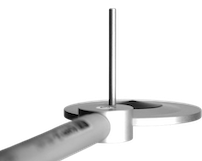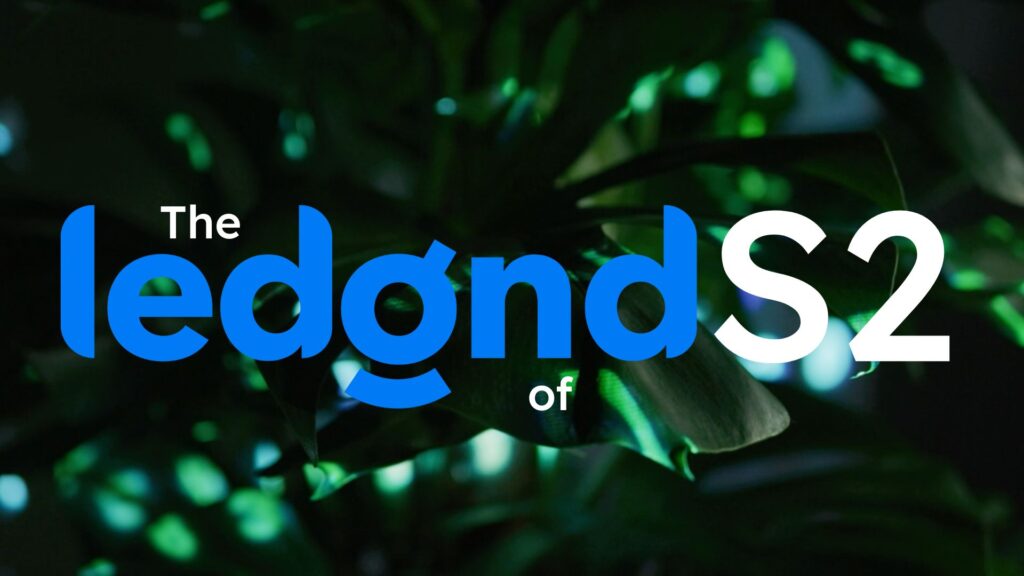The 5 Most Commonly Used Sensors in Greenhouse Horticulture
Greenhouse horticulture has made tremendous technological strides in recent years, largely due to the integration of sensors within the greenhouse environment. These sensors allow growers to precisely monitor and optimize the growing conditions for their crops. During discussions with growers, we often get asked which sensors are the most suitable. Naturally, this depends on what you aim to optimize and the goals you want to achieve. Therefore, in this blog post, we have outlined the five most commonly used sensors in greenhouses.
In this article, we discuss the following sensors:
- PAR Sensor (Photosynthetically Active Radiation)
- T/RH Sensor (Temperature/Relative Humidity)
- Net Radiation Sensor
- Soil Moisture Sensor
- CO₂ Sensor
PAR Sensor
The PAR Sensor (Photosynthetically Active Radiation) is indispensable in the greenhouse. This sensor measures the amount of light available for photosynthesis—the process by which plants convert light into energy for growth. PAR is measured within the wavelength range of 400 to 700 nanometers, the part of the light spectrum visible to the human eye and usable by plants for photosynthesis.

Installation of a PAR Sensor
By placing PAR sensors in the greenhouse, you can optimize light distribution. Install the sensor on a sturdy structure and ensure that the PAR sensor is level. For optimal measurement results, the sensor should be cleaned regularly.
Analyzing data from the PAR Sensor
After collecting and analyzing the data, you get a complete picture of the light distribution in the greenhouse. Too little light can lead to weak growth, while too much light wastes energy and can even be harmful to some crops. You can then decide whether to use shading, provide supplemental lighting, or adjust the light intensity.
With the data from PAR sensors, you can:
- Decide when supplemental lighting is needed
- Adjust light intensity according to the crop’s growth stage
- Reduce energy costs by using LED lighting more efficiently
T/RH Sensor
The T/RH sensor combines two measurements: temperature (T) and relative humidity (RH).
- Temperature (T) records the air temperature in degrees Celsius (°C)
- Relative Humidity (RH) indicates how much water vapor is present in the air compared to the maximum amount of water vapor the air can hold at that temperature.

Installation of the T/RH Sensor
It is best to place the T/RH sensor at the same height as the tallest leaves. Placing it deeper within the crop may result in different readings. If you have only one sensor, position it in the middle of the greenhouse or section. When using multiple sensors, distribute them evenly throughout the greenhouse.
Analyzing data from the T/RH Sensor
Temperature affects the rate of biochemical reactions in plants. Every plant has an optimal temperature range for growth. High temperatures can lead to stress, reduced yield, and increased respiration in the plant. In such conditions, the plant uses more sugars solely for maintenance, leaving less for growth. Lower temperatures often slow down plant growth.
Temperature and relative humidity have a significant impact on crop growth, photosynthesis, transpiration, and the risk of diseases.
Relative humidity is crucial for the evaporation of water by plants (transpiration). Excessively high humidity can hinder nutrient uptake and increase the risk of fungal diseases. On the other hand, low humidity can lead to plant dehydration.
With the T/RH sensors, you can:
- Calculate various factors such as VPD (Vapor Pressure Deficit), VD (Vapor Density), AV (Absolute Humidity), and dew point temperature
- Precisely regulate the greenhouse climate
- Reduce energy costs through more efficient heating and ventilation
- Decrease the risk of diseases by maintaining optimal humidity levels
Net Radiation Sensor
De netto-stralingsmeter is een sensor die de balans meet tussen de inkomende en uitgaande straling in een kas. Het gaat hierbij om zowel licht als infraroodstraling (warmte). Met de netto-stralingsmeter meet je dus het verschil tussen de straling die de kas binnenkomt (bijvoorbeeld zon of LED-verlichting) en de straling die de kas verlaat, bijvoorbeeld door wat het gewas uitstraalt.

Installation Net Radiation Sensor
Install the net radiation sensor above the canopy and ensure that it is level for the most accurate measurements. Many net radiation sensors have a built-in level to facilitate installation. Although many radiation sensors come with a special dirt-repellent coating, it is still advisable to clean the sensor regularly.
Analyzing data from the Net Radiation Sensor
By measuring and analyzing net radiation, you can reduce energy consumption in your greenhouse by adjusting shading, lighting, and heating/cooling according to the net radiation entering or leaving the greenhouse.
With the Net Radiation Sensor, you can:
- Optimize energy consumption by determining when to use shading to prevent overheating
- Improve crop growth by monitoring light intensity and quality
- Enhance climate control by more accurately regulating greenhouse conditions
Soil Moisture Sensor
Soil moisture sensors measure the water content in the soil or substrate in which plants grow. This information is crucial for efficient water management. By measuring the soil moisture level, you know exactly how much water is available.

Installation Soil Moisture Sensor
Analyzing data from the Soil Moisture Sensor
With data from the soil moisture sensor, you can optimize irrigation management by knowing precisely when and how much water the plants need. Excess moisture can lead to root rot or other related plant diseases. By optimizing moisture levels, you can reduce the risk of such issues.
With the Soil Moisture Sensor, you can:
- Apply precision irrigation, providing water only when and where it is needed
- Optimize water usage and prevent wastage
- Promote root system health
- Minimize nutrient leaching
CO₂ Sensor
A CO₂ sensor measures the concentration of carbon dioxide (CO₂) in the greenhouse air. CO₂ is an essential nutrient for plants. Through photosynthesis, plants convert CO₂ into sugars, which they use for growth and development.

Installation of the CO₂ Sensor
Always place the CO₂ sensor at the same height as the tops of the plants. If you have a single CO₂ sensor, make sure it is installed centrally in the greenhouse. If you have multiple CO₂ sensors, distribute them evenly throughout the greenhouse. Also, avoid placing them near CO₂ dosing spots, as this will result in elevated CO₂ concentrations that are not representative of the average CO₂ level in the greenhouse.
Analyzing data from the CO₂ Sensor
By measuring the CO₂ concentration in the greenhouse, you know exactly when to add extra CO₂ to the air. At low CO₂ levels, you miss out on growth, and photorespiration increases compared to higher CO₂ concentrations (in C3 plants).
With the CO₂ sensor, you can:
- Regulate CO₂ dosing precisely to optimize photosynthesis
- Save energy by adding CO₂ only when it is effectively used by the plants
- Monitor greenhouse air quality for worker safety
- Improve CO₂ administration efficiency and prevent wastage
New articles

Ledgnd launches season 2 of video series “The Ledgnd of”
Ledgnd has launched the second season of its video series “The Ledgnd of”. The series takes a closer look at the key concepts and innovations shaping modern greenhouse horticulture. In the new season,…

Ledgnd at Hortibiz Next Level Data: From data to action
During the theme week “Next Level Data, Artificial Intelligence and Robotics” by Hortibiz News Radio, Ledgnd joined the table to talk about one key question: how do you turn all greenhouse data back i…

Duijvestijn, Ledgnd and Gavita International continue collaboration on LED optimization
Following the success of the first LED optimization trial at Duijvestijn Tomaten in Pijnacker, Duijvestijn, Ledgnd and Gavita International are launching a second research phase to be conducted over t…
Read more

Ledgnd launches season 2 of video series “The Ledgnd of”
Ledgnd has launched the second season of its video series “The Ledgnd of”. The series takes a closer look at the key concepts and innovations shaping modern greenhouse horticulture. In the new season,…

Ledgnd at Hortibiz Next Level Data: From data to action
During the theme week “Next Level Data, Artificial Intelligence and Robotics” by Hortibiz News Radio, Ledgnd joined the table to talk about one key question: how do you turn all greenhouse data back i…

Duijvestijn, Ledgnd and Gavita International continue collaboration on LED optimization
Following the success of the first LED optimization trial at Duijvestijn Tomaten in Pijnacker, Duijvestijn, Ledgnd and Gavita International are launching a second research phase to be conducted over t…
Do you want to know more?
Interested in what Ledgnd can do for you? Leave your phone number, and we will contact you as soon as possible for a non-binding informational conversation

